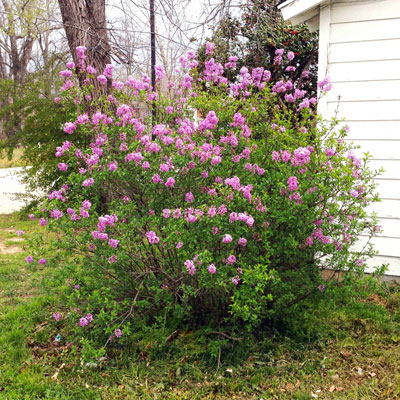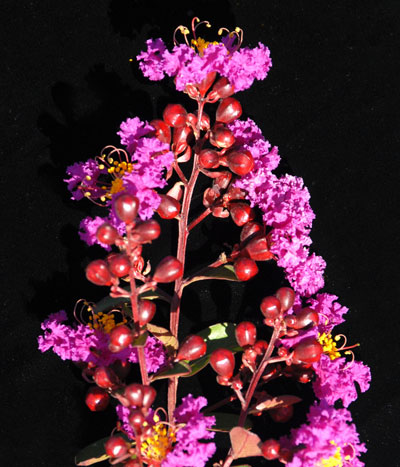Question of the Week – Number 1: April 7, 2022

“We just moved to Texas from Indiana. My daughter took this photo of a lilac in her town last spring. Is this the best they will grow here?”
I grew up in College Station, Texas, but my mom and dad were from Nebraska. All of my childhood I heard them refer to how beautiful the lilacs in the North had been, but I had never seen one.
When I transferred to Ohio State to finish my undergraduate degree and get my Masters, I got to see lilacs in their full glory.
Folks, I love my home state immensely, and I returned here soon after graduation and have been here ever since (55 years now), but our lilacs are nothing compared to what they would be in a colder climate. We’re just 15 or 20 degrees too hot spring, summer, fall and winter for lilacs to do their best work. Their flower heads are very small and the plants hardly grow.
Two beefs that I have:
(1) Wholesale growers in other parts of the country keep introducing new varieties, telling us that they have one that will hold up to the heat. I’ve bitten too many times on those claims. They won’t get me again. I’ll wait until I see them succeeding for a few years.
(2) Don’t call vitex “Texas lilac.” It doesn’t look like a lilac – not close-up and not from 200 yards. It doesn’t smell like a lilac. It’s not even related to a lilac. Whoever came up with that marketing misfire certainly did a disservice.
So, my suggestion to anyone who loves lilacs is just to do as my folks did – struggle through without them. If you’re north of I-20 I guess you could plant one and coddle it along, but remember I warned you. You’ll need to prepare to be frustrated.

My better advice would be that you plant vitex and call it by its real name (that no one can explain – “chaste-tree”). They’re beautiful, and they bring a great and rare color (blue) to the garden.

Better yet, look into the spectacular options in purple crape myrtles. Varieties like Purple Plum (dwarf) Twilight, Velma’s Royal Delight (short), Zuni, Lipan and my all-time favorite of all crape myrtles, Catawba.
